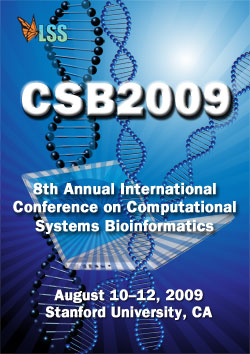A systematic study of homologous protein structures with insertions/deletions
RyangGuk Kim, Jon McCafferty, Jun-tao Guo*
Department of Bioinformatics and Genomics, University of North Carolina at Charlotte, 9201 University City Blvd, Charlotte, NC 28223 USA. jguo@uncc.edu
Proc LSS Comput Syst Bioinform Conf. August, 2009. Vol. 8, p. 103-113. Full-Text PDF
*To whom correspondence should be addressed.

Sequence insertions/deletions (indels) represent one of the mechanisms of protein evolution. Alternative splicing (AS), considered as the major means of expanding structural and functional diversity in eukaryotes, can generate protein isoforms with indels when compared to the reference splicing variant. Knowledge of the effect of indels on the structural changes of the isoform structures is essential to our understanding of the functionality of splicing isoforms and protein evolution. Very little is known about how the indels, especially the ones that involve the core secondary structures, affect protein structures as only a few (less than 10) have two solved isoform structures. Here we show a systematic analysis on the structural changes due to indels through mining the Protein Data Bank (PDB) for highly homologous proteins. We found that more than 30% of indel residues adopt disordered conformation which is significantly higher than that in the control dataset. In addition, protein structures tend to be conserved and can tolerate structural insertions and deletions, suggesting the plasticity of protein structures. We also presented examples to show how structural core conservation and sequence/structure flexibility can help accurately predict isoform structures with indels, which has been shown to be extremely difficult with current comparative modeling techniques. To our knowledge, this is the first systematic study of the effects of indels on structural changes.
[ CSB2009 Conference Home Page ] .... [ CSB2009 Online Proceedings ] .... [ Life Sciences Society Home Page ]